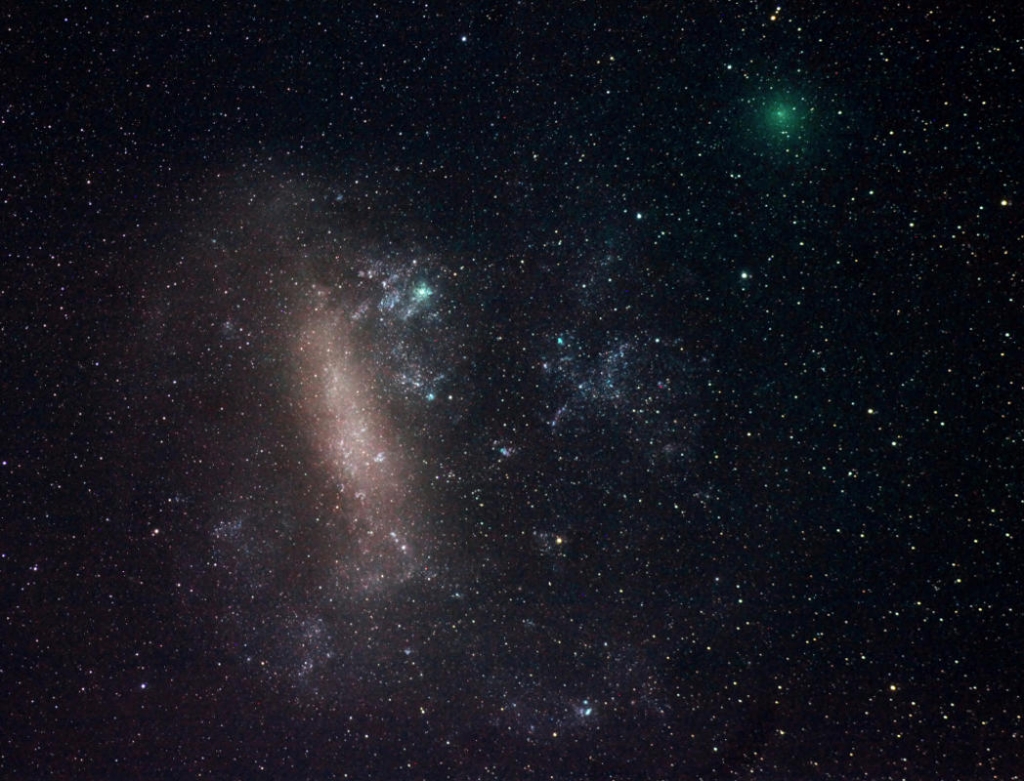-
Tips for becoming a good boxer - November 6, 2020
-
7 expert tips for making your hens night a memorable one - November 6, 2020
-
5 reasons to host your Christmas party on a cruise boat - November 6, 2020
-
What to do when you’re charged with a crime - November 6, 2020
-
Should you get one or multiple dogs? Here’s all you need to know - November 3, 2020
-
A Guide: How to Build Your Very Own Magic Mirror - February 14, 2019
-
Our Top Inspirational Baseball Stars - November 24, 2018
-
Five Tech Tools That Will Help You Turn Your Blog into a Business - November 24, 2018
-
How to Indulge on Vacation without Expanding Your Waist - November 9, 2018
-
5 Strategies for Businesses to Appeal to Today’s Increasingly Mobile-Crazed Customers - November 9, 2018
Two comets are coming so close to Earth it’s scary
As the telescope is tracking P/2016 BA14, the background stars stream past while the comet remains stationary in the center of the field of view.
Advertisement
Astronomers the world over kept their high-end telescopes set on the sky on Monday to see the closest ever flyby of two comets that may have more in common than their intriguingly similar orbits – they may be twins of a sort. The first comet 252P/LINEAR, is a bright green color from the carbon gas it’s puffing out, says the University of Maryland’s Matthew Knight.
Both comets are too small to be seen with the naked eye, but can be spotted with powerful, professional-grade telescopes, NASA said.
Usually, comet parts burn up after breaking off. This pass-by means scientists could get the rare chance to study two pieces of a broken-off comet.
This comet is Comet PanSTARRS (P/2016 BA14), which will pass by at around noon on Tuesday and come within nine lunar distances, or around 2.1 million miles, from the Earth.
Trailing behind the emerald green comet is a smaller one, P/2016 BA14, which appears to have a almost identical orbit.
MIT astronomers first discovered the 252P in 2000, while the BA14 was first identified with the help of the Hawaiian observatory Pan-STARRS.
If you can’t get out to catch a glimpse of the two comets, you can always turn to the Virtual Telescope Projects’ live web broadcast that will begin at 5 p.m. EDT on Monday March 21.
Meanwhile, at around 7:30 AM tomorrow P/2016 (whose exact size remains unclear) will swoop in as close as 2.2 million miles, making it the third closest comet flyby in history. Then on Tuesday, the newly-discovered comet P/2016 BA14 will pass us at a distance of about 2.2 million miles (3.5 million kilometers). “We use the DCT to refine orbits, measure compositions, determine sizes and shapes, and the rotations of near-Earth asteroids, all of which are essential to better understanding the impact hazard and the viability of various impact mitigation strategies”.
Based on NASA’s calculations, this is the closest pass for both of these comets for the foreseeable future, and after these encounters, both are headed back out towards the orbit of Jupiter. This may sound like a significant distance, but no comet has come this close to our home planet in 246 years. Spectra should help astronomers determine if the comets’ compositions are similar enough to prove they’re related.
Advertisement
The second comet, named P/2016 BA14 – these guys weren’t so imaginative either – was discovered by researchers at the University of Hawaii. That makes them the fourth and seventh closest approaches by comets known, in fact. “Instead, it is an excellent opportunity for scientific advancement on the study of comets”, he added. The scientists hope to further clarify the twin comet thesis.




























